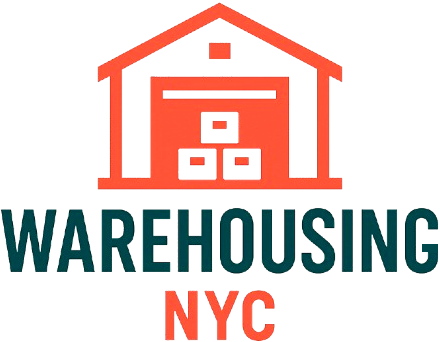Warehouse damage in New York City isn’t just a nuisance—it’s a costly disruption that can derail operations, delay deliveries, and impact client trust. Between tight delivery windows, aging infrastructure, and space constraints, even small errors can snowball into expensive problems. Many teams ask, “Which of the following is a major reason for damage within the warehouse?” but the reality is that it’s often a combination of overlooked details and reactive planning.
Here are six ways reliable partners help prevent the most common warehouse challenges and solutions.
Table of Contents
Key Takeaways
✔ NYC warehouses face unique damage risks due to space limitations, fast-paced operations, and aging infrastructure.
✔ Common causes of warehouse damage include poor layout, equipment misuse, and climate-related issues.
✔ Reliable partners help solve warehouse challenges with smart design, training, and maintenance.
✔ Real-time tracking systems reduce inventory errors and prevent mishandling.
✔ Proactive safety programs lower the risk of injury and product loss.
✔ Scalable support and flexible services prevent damage during high-demand periods.
✔ Choosing a provider with NYC-specific knowledge avoids costly compliance and access issues.
✔ Professional communication and preventative strategies are key to solving long-term problems of warehousing.
 What Causes Damage in NYC Warehouses?
What Causes Damage in NYC Warehouses?
In a city known for speed and density, warehouse operations face more pressure than most. While damage might seem random, it often stems from predictable—and preventable—issues. Understanding these root causes is essential when tackling warehouse challenges and solutions head-on. Back in 2020, there were around 151,000 warehouses worldwide—a number that has only grown, making it even more important to address these challenges with clarity and strategy.
1. Improper Forklift Use and Human Error
One of the most common answers to the question, “Which of the following is a major reason for damage within the warehouse?” is operator error. In tight NYC spaces, rushed schedules often lead to mishandled equipment and avoidable collisions. Without consistent training and supervision, these problems of warehousing quickly add up.
2. Poor Inventory Placement and Racking Systems
Incorrect stacking or outdated shelving systems create serious risks for falling products and structural collapse. In many NYC warehouses, vertical storage is overused due to limited space, which heightens the impact of poor layout. This makes proper rack engineering a key component of solving warehouse challenges before they become safety issues.
3. Moisture, Heat, and Temperature Fluctuations
Climate control often gets overlooked, especially in older facilities. However, poor insulation and HVAC issues lead to warped materials, spoiled goods, and condensation-related damage. Reliable partners often provide environmental monitoring to mitigate these hidden but costly problems of warehousing.
4. Inadequate Lighting and Signage
Dim lighting and unclear signage increase the risk of accidents during material handling and transit. Many NYC warehouses operate late into the night, where poor visibility becomes a serious safety issue. Enhancing these elements is one of the most affordable warehouse challenges and solutions available.
5. Lack of Preventative Maintenance
Delaying maintenance on docks, racks, and floors often leads to preventable breakdowns or hazardous conditions. These oversights stem from budget constraints or poor oversight—not from necessity. In the context of NYC’s fast pace, skipping maintenance is a major contributor to warehouse challenges and long-term repair costs.
6. Overcrowding and Poor Space Utilization
Limited square footage in NYC often leads to overcrowded aisles, blocked exits, and excessive vertical stacking. These conditions increase the chance of dropped goods, worker injuries, and inefficient movement. Overcrowding is a recurring example of warehouse challenges that require professional space planning to solve.
7. Inconsistent Receiving and Shipping Schedules
Erratic delivery times and rushed loading increase the risk of product damage at docks and staging areas. Without a consistent schedule, teams are forced to work reactively, leading to errors in handling and labeling. These breakdowns are classic problems of warehousing that contribute to inventory loss and safety concerns.
6 Ways Reliable Partners Help Prevent Common Warehouse Damage in NYC
1. Invest in a Partner with Strong Warehouse Design and Layout Support
Many warehouses in NYC operate in tight, vertical spaces where every inch matters. A poor layout leads to blocked aisles, damaged inventory, and slower operations. Reliable partners help reconfigure space in ways that reduce risks tied to some of the most common problems of warehousing.
- Optimized Aisle Widths and Traffic Flow: Narrow aisles and blind corners often lead to collisions between forklifts and shelving units. A knowledgeable partner ensures the layout allows for safe two-way traffic while minimizing dead zones.
- Smart Racking and Storage Systems: A partner who understands weight distribution, load tolerances, and local building codes can prevent rack collapses and product falls. These are frequent answers to the question, which of the following is a major reason for damage within the warehouse.
- Clearly Zoned Work Areas: Separation between receiving, storage, and packing zones helps avoid mix-ups and excess movement of materials. This zoning is key to addressing both operational slowdowns and long-standing warehouse challenges.
2. Choose Partners Who Prioritize Employee Training and Safety Standards
Damage often starts with simple mistakes—misplaced pallets, rushed forklift maneuvers, or incorrect lifting techniques. A trusted partner enforces consistent safety training, not just one-time orientations. This approach addresses the human side of many recurring warehouse challenges.
- Ongoing Forklift and Equipment Certification: In NYC’s high-volume warehouses, equipment gets used nonstop, often by multiple shifts. Partners who offer or require regular forklift certification reduce accidents that cause rack damage, product loss, and worker injury.
- Clear Protocols for Hazard Zones: Partners reinforce rules around high-risk areas like loading docks or mezzanine storage. For example, proper signaling at blind corners can drastically reduce side-impact damage from machinery.
- Culture of Accountability and Reporting: Reliable partners encourage workers to report near-misses or unsafe setups without fear of blame. This early-warning culture helps identify root causes of the most common problems of warehousing before they escalate.
3. Work With Partners Who Use Smart Inventory Management Systems
Misplaced goods, miscounts, and overstacking can all lead to costly damage and delays. Partners who implement smart tracking tools improve accuracy and reduce manual handling errors. This kind of visibility is essential when solving tough warehouse challenges and solutions.
- Real-Time Barcode and RFID Scanning: When goods are scanned on arrival, during storage, and at outbound loading, every touchpoint is traceable. This reduces reliance on memory or paper logs, which often lead to stacking errors or lost goods.
- Automated Reorder and Slotting Systems: Smart partners use software that recommends product placement based on size, turnover rate, and weight. This ensures heavy items don’t sit atop fragile ones and that fast-moving goods are easily accessible.
- Digital Alerts for Damaged or Expired Items: Systems that flag compromised goods early prevent flawed products from entering outbound shipments. That’s a key solution to one of the most frustrating warehouse challenges—damaged deliveries reaching customers.
4. Rely on Partners With Strong Preventative Maintenance Programs
Wear and tear in NYC warehouses happens fast, especially in older buildings or high-turnover facilities. Small cracks in flooring, loose bolts in racking, or faulty dock plates often go ignored until they cause real damage. A partner with routine maintenance checks helps reduce surprise failures and eliminate persistent problems of warehousing.
- Regular Inspections of Racking, Docks, and Floors: Trained teams catch issues like sagging racks or dock levelers that don’t sit flush. Fixing them early prevents accidents that can damage inventory or harm employees.
- Service Logs and Scheduled Repairs: Partners who log every inspection and service call create an accountability trail. This transparency builds trust and helps prioritize which warehouse challenges to address first.
- Quick Response to Wear-and-Tear Alerts: Good partners don’t wait until the next quarter to fix a broken guard rail. Fast fixes keep workflow moving and prevent minor issues from growing into full-blown operational setbacks.
5. Use Partners Who Understand NYC-Specific Logistics Constraints
New York City warehouses face problems that many suburban or rural facilities never encounter. From limited loading zones to strict fire codes, a partner familiar with local rules prevents disruptions and hidden damage. Solving warehouse challenges and solutions in NYC requires more than general experience—it takes location-specific know-how.
- Efficient Use of Vertical Space Without Overload: NYC warehouses often build upward, not outward. Partners with engineering insight know how to maximize high bays without exceeding weight limits or creating tipping hazards.
- Compliance With NYC Fire and Safety Codes: The city enforces strict rules on flammable storage, emergency access, and egress routes. Partners who ignore these codes risk citations and insurance issues after damage occurs.
- Planning Around Street-Level Access Limitations: A reliable partner coordinates truck access based on time-of-day restrictions, parking zones, and union labor availability. This prevents rushed unloading that often causes dock or pallet damage.
6. Collaborate With Partners Who Offer Scalable, Flexible Support
Warehouse needs shift constantly—seasonal peaks, product launches, or lease transitions can put pressure on space, staffing, and systems. Partners who can flex with demand help minimize errors that come from overextension. This adaptability solves many recurring problems of warehousing in a practical, responsive way.
- Temporary Storage and Overflow Solutions: During peak months, partners who can provide off-site storage or portable containers prevent dangerous overstacking. This is especially important in NYC, where square footage is always tight.
- Scalable Labor Options for Inbound/Outbound Surges: Having on-call labor during high-volume periods ensures that inventory is handled with care, not in haste. This reduces accidents tied to burnout or understaffing.
- Custom Plans for Project-Based Needs: Some partners offer short-term solutions for relocations, renovations, or inventory audits. These services address short-term warehouse challenges without requiring long-term commitments or reconfigurations.
How to Choose the Right Warehouse Provider
The global warehousing market size is projected to grow at an annual rate of 8.1% from 2024 to 2030, reflecting increasing demand—but not all providers are equipped to meet it, especially in a fast-paced, high-density environment like New York City.
The wrong partner can add to existing problems, while the right one helps prevent damage, streamline operations, and solve complex warehouse challenges and solutions. In such a competitive and growing market, choosing the right provider becomes even more critical.
These seven traits separate average providers from professionals who protect inventory, efficiency, and reputation:
1. Local Experience and Regulatory Knowledge
A provider who knows NYC’s layout, zoning, and truck access rules helps avoid costly delays and infrastructure-related damage. For example, providers familiar with fire code spacing can prevent violations and protect inventory from unnecessary risk. This level of expertise directly addresses the most overlooked problems of warehousing in city environments.
2. Proactive Maintenance and Inspection Protocols
A professional warehouse partner doesn’t wait until equipment breaks or shelving collapses. Instead, they implement scheduled checks for racking systems, docks, and flooring to catch issues early. These routines reduce long-term wear and prevent the kind of structural problems that often answer the question, “Which of the following is a major reason for damage within the warehouse?”
3. Real-Time Inventory and Tracking Capabilities
Top-tier providers offer technology that tracks goods from intake to outbound delivery. Features like barcode scanning, RFID systems, and cloud-based dashboards improve visibility and reduce misplaced or damaged inventory. These tools are essential for solving modern warehouse challenges with precision and speed.
4. Scalable Services for Changing Needs
Warehouse needs fluctuate—seasonal spikes, pop-up inventory, or short-term overflow require flexible solutions. A reliable provider offers scalable labor, storage, and logistics options that adapt without compromising safety or accuracy. This flexibility prevents rushed handling and over stacking, both common problems of warehousing in NYC.
5. Strong Safety Culture and Employee Training
A provider’s commitment to safety starts with its workforce. Ongoing training in forklift handling, emergency response, and hazard identification reduces accidents and keeps inventory intact. This emphasis on preparation helps prevent avoidable damage, making it a smart solution to recurring warehouse challenges and solutions.
6. Transparent Communication and Accountability
Professional partners don’t disappear after a signed contract—they stay responsive, honest, and involved. Clear reporting, real-time updates, and collaborative problem-solving build trust and reduce miscommunication. In a high-pressure warehouse environment, this level of clarity makes a measurable difference in preventing operational breakdowns.
7. Commitment to Sustainability and Clean Operations
A warehouse provider that prioritizes clean, organized, and eco-conscious operations helps maintain a safer environment for both goods and workers. Sustainable practices—like proper waste disposal, clean floors, and energy-efficient lighting—reduce hazards such as spills, obstructions, and poor visibility. These efforts not only support long-term safety but also address modern warehouse challenges and solutions through responsible, forward-thinking management.
Frequently Asked Questions
What role does warehouse location play in reducing damage?
Warehouse location affects access, delivery speed, and risk exposure. A facility near major highways but outside high-traffic bottlenecks can reduce late arrivals and rushed handling. Choosing the right location also helps avoid issues like flood zones or unstable infrastructure—both hidden problems of warehousing. Reliable partners often guide businesses in selecting or relocating to facilities that reduce long-term warehouse challenges.
Can seasonal weather impact warehouse damage in NYC?
Yes, seasonal weather plays a major role in warehouse conditions, especially in older buildings. Rain and snow can lead to water intrusion, while extreme heat stresses HVAC systems and impacts temperature-sensitive goods. These risks are often overlooked in everyday operations but contribute to cumulative warehouse challenges and solutions. A professional partner will prepare for seasonal shifts with insulation checks, drainage solutions, and climate monitoring.
How do labor shortages contribute to warehouse damage?
When warehouses are short-staffed, remaining workers are pushed to move faster, often skipping best practices. This increases the chance of dropped goods, missed inspections, and equipment misuse—leading causes of damage in high-volume facilities. Staffing issues are a lesser-known answer to which of the following is a major reason for damage within the warehouse.Partnering with providers who offer flexible, trained labor helps reduce this risk.
What insurance considerations should be made when selecting a warehouse provider?
Not all warehouse providers carry the same level of insurance or liability coverage. It’s important to verify what’s covered in the event of fire, flood, or product damage, especially in urban settings like NYC. Inadequate coverage can turn minor warehouse challenges into major financial setbacks. Reputable providers offer transparent insurance documentation that aligns with real-world problems of warehousing.
Do warehouse providers offer emergency response protocols for accidents or damage?
Yes, but only professional providers maintain clear emergency procedures for incidents like fire, structural collapse, or inventory accidents. These protocols include evacuation plans, damage documentation, and rapid repair coordination. Quick response minimizes downtime and prevents further warehouse challenges from snowballing. Businesses should ask providers to share their emergency action plans as part of the vetting process.

Protect What Matters—Partner with Warehousing NYC By Best
At Warehousing NYC By Best, keeping inventory safe, organized, and moving efficiently isn’t just a promise—it’s how we do business every day in the heart of New York, NY. From secure storage to smooth logistics, our team handles the toughest warehouse challenges so you don’t have to. We know this city inside and out, and we’ve built our services to solve real problems of warehousing—from space constraints to fast turnarounds.
When every square foot and every second counts, count on us to deliver with care, clarity, and the confidence that only true professionals bring. Contact us today!

